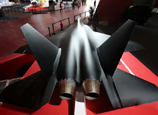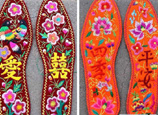
Qin Yue, a sales manager with Shanghai Newest Luggage, said orders clinched at the fair almost equaled that in the last session, thanks to the company's years of effort.
"We have attached more importance to increasing the added value of our products in recent years. That's why we still have obtained orders with those regular overseas clients," Qin said.
The Shanghai-based company achieved some $1.5 million in orders at the fair.
"Besides maintaining a relationship with our old clients, we are developing new markets in South America and Southeast Asia. We are confident about finding more potential buyers in the new markets," Qin said.
Peng Peng, a researcher with Guangzhou Academy of Social Sciences, said China should no longer rely on those original equipment manufacturers and processors to sustain its foreign trade development.
"It will be more difficult for Chinese enterprises with fewer international brands to find overseas buyers, especially amid the current grim global demand," Peng said.
"The era of high-speed trade development based on traditional and simple manufacturing has passed," he added.
China experienced a relatively high growth of over 20 percent in its foreign trade over the past decade, partly because of the country's ascension to the WTO in 2001 and China's industrial expansion in coastal areas since the 1990s.
However, the country's foreign trade in the first three quarters of the year rose a modest 6.2 percent to $2.84 trillion year-on-year, sharply contrasting with the 20.3 percent growth registered during the same period in 2011, according to customs sources.
















 Landmark building should respect the public's feeling
Landmark building should respect the public's feeling


![]()
